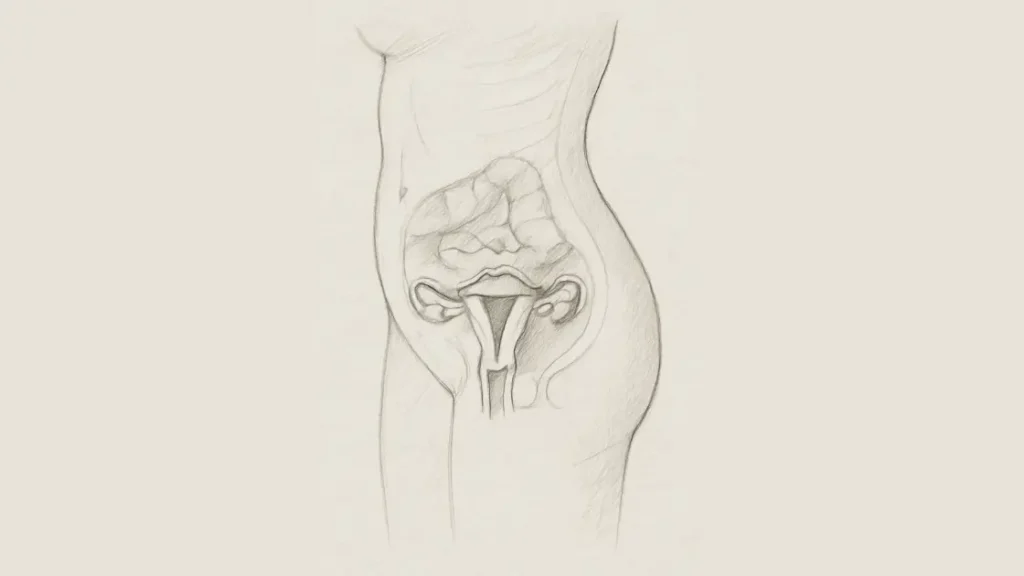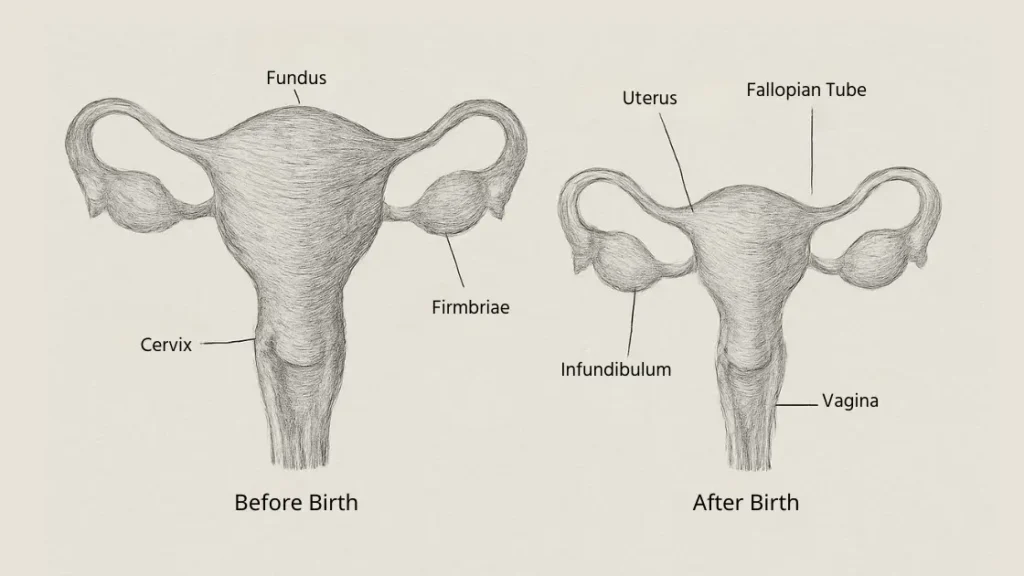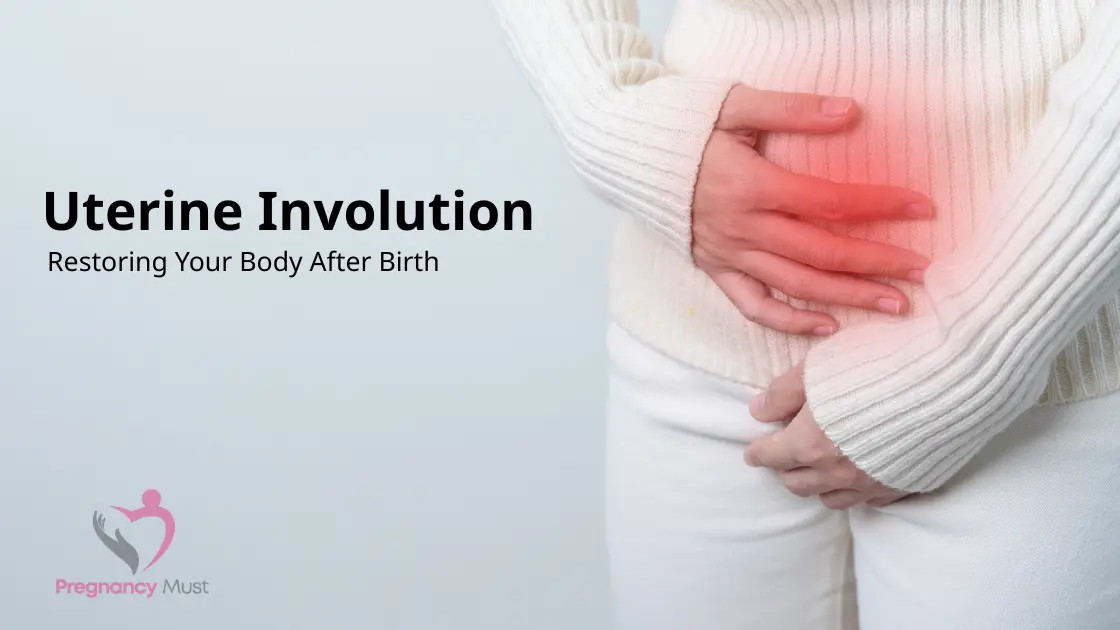Uterine involution is one of the vital processes that occurs after childbirth. One can define it as a biological change that, as a result, makes the uterus shrink back to its non-pregnant size. There is an important role that it performs during the recovery period after childbirth, and this is the time when a woman gets to restore body functions and the uterus gets ready to conceive. In this guide, we are going to learn, in detail, what uterine involution is, how it functions, and why it is so crucial after birth.
Table of Contents
What is Uterine Involution?

Uterine involution refers to the process by which the uterus contracts and shrinks to its standard size after pregnancy. It occurs after the placenta is delivered, and the uterus gradually returns to its pre-pregnancy state. This is also a period when the uterus is recuperating from the effects of having given birth, which might have caused harm in the delivery process.
The process of uterine involution begins immediately after birth and typically takes about six weeks to complete. It’s a gradual reduction in the size of the uterus, where the muscle fibers contract and the endometrial lining sheds. This is why the uterus feels firm and reduced in size over time, and why many women may feel cramping as the uterus works to return to its original state.
Uterine Involution After Birth

In women who have delivered a baby, uterine involution after delivery is very important so that the uterus can return to normal. It’s expanding to hold a pregnancy, so it may take time and effort to return to its standard size. As the uterus gets smaller, final contractions take place, which can make you feel uncomfortable or experience a little cramping.
The intensity of these contractions can be more vigorous during subsequent pregnancies as the muscles have been stretched before. Postpartum uterine involution is a process that usually takes about 6 weeks, but in some cases, it may be slightly longer.
Uterine Involution: Definition and Its Importance
The postpartum contraction of the uterus back to the size and form of the prior pregnancy is called uterine involution. This is necessary to have the proper postpartum recovery, and it prevents complications such as excessive bleeding. The process and its importance can be explained below:
Definition of Uterine Involution:
- The process by which the uterus contracts and shrinks after parturition enabling it to regain its pre-pregnant state in size and shape is referred to as uterine involution.
- This begins immediately after the baby is born in most instances, and lasts up to six weeks.
Key Processes in Uterine Involution:
- Contractions and Shrinking:
- During birth, the contraction of the uterus starts and shrinks it in size. This is known as contractions or afterpains, and it may feel like cramping.
- These contractions occur until the uterus returns to its standard size, which was greatly expanded during the pregnancy.
- Endometrial Shedding:
- Involvement causes the shedding of the endometrial lining of the uterus, making it thin.
- This assists in the elimination of any unwanted tissues by-products, e.g., blood clots or placenta tissue which is necessary during recovery.
Importance of Uterine Involution:
Prevention of Postpartum Hemorrhage
- One of the most critical factors contributing to postpartum hemorrhage (excessive bleeding after childbirth) is uterine involution
- The uterus can also contract, leading to minimal bleeding, because it assists in closing blood vessels that supply blood to the placenta.
Proper Healing and Recovery
- Uterine involution is necessary so that the uterus can completely heal and return to its pre-pregnant condition.
- Other complications associated with failed involution are infection or excessive bleeding, which compromise the entire recovery process, in case of incomplete involution.
Hormonal Balance and Future Fertility
- As the uterus contracts and heals, hormonal balance returns to the body, essential for your future fertility.
- Helping complete uterine involution sets the body up for potential subsequent pregnancies, if you plan to get pregnant again.
Overall Impact on Postpartum Health
- The normal uterine involution enables the body to concentrate on other facets of recovery, including breastfeeding and healing of the spirit.
- It assists in avoiding complications that might hinder bonding with the newborn child and the process of becoming a mother.
Postpartum recovery depends on uterine involution, which provides adequate healing of the uterus, avoiding excess bleeding, as well as hormonal restoration. It is helpful during physical and emotional recovery, making the whole process after childbirth less difficult.
Factors Affecting Uterine Involution
Several factors can impact the process of uterine involution, including:
1. Mode of Delivery
The women who have taken the cesarean delivery surgery will have a high probability of a longer recovery period compared to the vaginal deliveries. This is due to the cut that is sustained in the course of the surgery that is apt to stall the normal body collapse. In cesarean births, more trauma is experienced in the uterine muscles, therefore taking longer before the uterine muscle and the cut areas heal. Also, previous scar tissue, due to the incision, might hamper the effectiveness of the complete contraction of the uterine muscle. There are even some situations in which cesarean sections can also cause a longer recovery time, even prolonged uterus involution.
2. Breastfeeding
Breastfeeding is known to release oxytocin, a hormone that assists in uterine contraction during the process of involution. Besides the aid given to the uterus to resume a pre-pregnancy size, oxytocin also helps to control the bleeding left by contracting the blood when released. Also, the physiologic process of nursing promotes the contractions and shrinking of the uterus at an increased pace. High breastfeeding frequency may assist in accelerating involution of the uterus, and many women find that their uterus is firmer and smaller a few weeks after beginning breastfeeding postpartum.
3. Age
Older women take a longer time to recover than young women. As the body matures, the bounciness of the uterine muscles declines, and this might be the retardation or lack of instant involution in the uterine muscles. This is because smaller muscle tone and less productive hormones are tendencies in older women, key elements of uterine contraction. Recovery after childbirth also occurs longer in older women in terms of low collagen, slow healing rates, and natural body ageing. These increase the length and even slow down the process of uterine involution.
4. Multiple Pregnancies
Those women who have already borne several children might undergo a severe process of uterine involution. The reason is that the uterine muscles have been stretched severely, making it harder for the uterus to revert to its original size. Due to every child, the elasticity of the uterus becomes less and less, slowing down the process of contractions and involution. Also, women who have gone through multiple pregnancies might find their tissues in the uterus more severely damaged or scarred, and having this happen makes the involution process all the more complicated. Consequently, the process of uterine involution can be prolonged, or it can even demand more medical action.
5. Health Conditions
Some medical situations may postpone uterine involution, e.g., infections and abnormalities. Such cases as the uterine fibroids, endometritis of the uterine lining, or the question of the retained placenta may disturb the regular course of involution. Infections may inflame the area, inhibiting the uterus’s tightening and the healing process. Consequently, retained placenta may cause uncontrollable bleeding and infect the area further, extending the period of recovery. Other medical factors that may interfere with uterine healing include illnesses like obesity or diabetes that alter hormone status and blood flow into the body, thus delaying uterine recovery to normalcy.
How to Support Uterine Involution

Even though the process of uterine involution is natural, it may be treated and facilitated through a number of ways:
1. Breastfeeding
As stated above, breastfeeding is vital in encouraging the uterus to contract. Attachment of the baby to the breast causes oxytocin release, which causes the uterus to contract and shrink. This is a process that is required to accelerate uterine involution. Besides the stimulation of uterine contractions, breastfeeding also hinders persistent bleeding after giving birth as the organ casts out leftover tissue, including blood clots. Supporting the natural birth recovery, the more a mother breastfeeds, the more oxytocin is released to facilitate more uterine involution.
2. Staying Active with Postpartum Belt
Light activity, including walking or pelvic floor exercises, will ensure that the blood flows and facilitate the reduction of the uterus back to its standard size as before pregnancy. But it would be wise not to engage in heavy exercises or strain until completely healed. Regular exercises relieve the discomfort associated with uterine involution, since they facilitate increased blood flow and enhanced muscle tone. Exercises such as those that stimulate the core and pelvic region can help encourage the shrinking of the uterus more effectively. Before any exercise you engage in, discuss with your doctor to ensure you are safe and that your exercise suits your postpartum body. Wearing a postpartum belt can provide additional support during these activities, helping to support your abdominal muscles and promote proper uterine contraction. However, it’s important to avoid heavy exercises or straining until you’re fully healed.
3. Proper Nutrition
Consumption of a balanced diet containing nutrients, such as iron, vitamins, and dietary proteins, is vital to ensure the healing process and avoid complications during uterine involution. Swelling can be avoided by reducing the salt intake, speeding the total healing process. Foods that contribute to healing, such as leafy greens, lean meat, and fruits, can be nutrient-rich and contain essential vitamins and minerals, including vitamin C, which facilitates repair of tissues, and calcium, which helps strengthen bones. Hydration is also necessary to support standard uterus functionality and make eliminating toxins in the body easier.
4. Postpartum Care
Follow-up visits with a medical specialist are imperative to check the process of uterine involution and eliminate the risk of complications. They should also do regular checks so that, in case of a problem, they can identify it early, such as infection and excessive bleeding. Your care provider will examine the uterus’s size, firmness, and contractability, which should shrink to its normal size. Such visits also provide a chance to discuss your concerns, such as pain management, bleeding, or other postpartum symptoms, to make sure your recovery process is proceeding well.
Postpartum Uterine Involution and Its Challenges
Uterine involution after giving birth may be an unpleasant period in which many women have to deal not only with physical recovery but also with emotional recovery. In the procedure, the women can feel cramps, vaginal bleeding, and discomfort as the uterus contracts. These symptoms tend to disappear when the uterus returns to normal size, but one has to keep checking for signs of complications. During a period, excessive cramping or bleeding is significant to receive treatment as soon as possible. The presence of pain that does not go away after some time or the large blood clots may represent issues with uterine involution, such as the presence of retained placenta or infection.
FAQ Section
1. What is uterine involution?
It involves the increase in the size of the uterus back to the normal size after childbirth. It entails contractions to reduce the size of the uterus and get rid of the tissue left in the womb.
2. How long does uterine involution take after birth?
The process of Uterine involution postpartum can go on for approximately six weeks, although it can be affected by influences such as the route of delivery and general health.
3. Can uterine involution be delayed?
Yes, such factors as repeat pregnancy, having the birth successfully delivered with a cesarean section, or underlying medical conditions may slow down the way the uterus shrinks.
4. How can I support uterine involution?
Breastfeeding, exercising, consuming healthy foods, and following postnatal appointments may support the involution of the uterus.
5. Is cramping normal during uterine involution?
Other complications may be a result of incomplete uterus involution, like excessive bleeding, infection, or a retained placenta. The progression of uterine involution should be checked periodically.
6. What happens if uterine involution is not complete?
Complications like excessive bleeding, infection, or retained placenta may result from improper uterine involution. With routine examinations, tracking the development of uterine involution is critical.
Conclusion
In conclusion, involution of the uterus is a major phase under which the postpartum state can recover. It is also a vital procedure in recovery and restoration of uterus to its original dimensions. Conclusively, uterine involution is a crucial postpartum healing process, which guarantees that the uterus heals and returns to its normal size. Being aware of this process, being helpful by doing healthy habits such as breastfeeding, moderate exercising, and being aware of the complications can help smooth out the process. Sometimes, consult your healthcare provider when you feel scared about the healing or involution of the uterus.
Explore more on Pregnancy Must –
